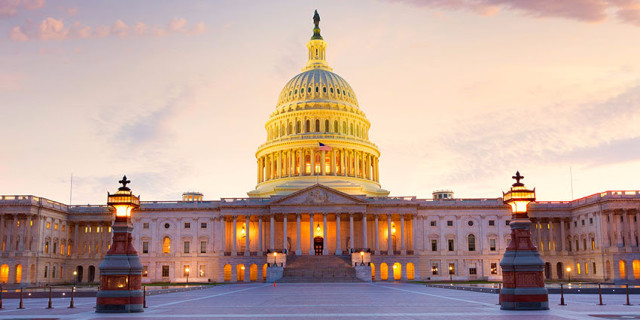What’s the Most Important Issue for the Liberty Movement to Focus On?

There are many great candidates, but there’s one that stands above the rest.
One of the problems with large social movements is that it can be difficult to figure out which issues to focus on, and the liberty movement is no exception. There are thousands of ways the government has inserted itself into our lives, and each of them represents an opportunity for change in a pro-liberty direction.
The good news is that we have thousands of libertarians, many of whom have picked their own niche topics of interest to focus on, which means we can fight this battle on multiple fronts simultaneously. But while the decentralized nature of this movement is certainly one of its strengths, it sometimes makes it hard to build momentum on the topics that are more important.
The question then arises, if we wanted to pick a specific topic to emphasize, which topic should that be? Stated differently, what issue is the most important when it comes to scaling back government intrusion in our lives?
To help us decide, let’s take a look at some of the top contenders, in no particular order.
1) The Military Industrial Complex, Surveillance State, and Foreign Intervention
One of the biggest issues with the US government is undoubtedly its Military Industrial Complex. The $782 billion defense budget is a massive waste of resources, and the civil liberties violations associated with the surveillance state are nothing to scoff at either. Add in war and all other kinds of foreign intervention, and it becomes pretty clear just how big this problem has become.
2) Immigration
Barriers to immigration may not be something we think about every day, but they have life-changing consequences for millions of people. Lifting these barriers would not only be a win for human rights, it would also provide tremendous economic benefits as people take advantage of the opportunities that become available.
3) Criminal Justice Reform
I still remember the day I first found out America had the highest incarceration rate in the world. I was stunned then and I remain stunned to this day. The War on Drugs in particular has put thousands of people behind bars for non-violent offenses, and harmful practices like civil asset forfeiture and no-knock raids are commonplace. Countless lives have been needlessly destroyed because of this inhumane system.
4) Money and the Fed
While social issues often get the spotlight, economic issues are arguably just as important, especially when it comes to the Federal Reserve. As Ron Paul has regularly pointed out, central banking has been responsible for so much of the corruption, war, and poverty that we have seen in recent decades, and anyone who’s been keeping an eye on rising prices can tell you just how much damage it can cause.
5) Free Speech
Free expression is one of the pillars of a free society. Without the freedom to say and publish what we see fit, we have no means of calling attention to injustice or arguing for our ideas. Fortunately, free speech has many protections in the US, but we’d be naive to think this means we’re in the clear. Government pressure has already prompted Big Tech platforms to censor many important discussions, and surveys show Americans increasingly support the government stepping in to restrict “false information” online. If public dialogue breaks down even more, the consequences could be serious.
6) Gun Rights
Many argue the Second Amendment is the key to defending every other liberty, and they have a point. As history has shown time and again, it’s hard to tyrannize an armed population. At the end of the day, those who have a means of defending themselves will have a far better chance of preserving their liberties than those who don’t.
And the Winner Is…
Though all of the issues mentioned above are important, the issue that takes the top spot in my books is one I haven’t mentioned yet.
Education.
The main reason education is so important is that it is the key to all the rest. The first step for achieving change on any issue is teaching people about it. And we will struggle to do that effectively as long as the government has a virtual monopoly on teaching the next generation.
Think about it. Kids spend 12 years of their life in government schools, learning government-approved history, geography, literature, economics, and civics, being taught to obey authority, standing for the national anthem and reciting the pledge of allegiance. We’re talking 50 million kids in any given year. This isn’t some minor intrusion in our lives. There’s a public school in just about every neighborhood in America.
In addition to public schools being generally pro-government by their very nature, there is also evidence they tend to have a distinct “big-government” bent. For instance, among high school teachers in the US there are 87 Democrats for every 13 Republicans. For English teachers, the ratio is 97 Democrats for every three Republicans.
In his book The Corrupt Classroom, education researcher Lance Izumi summarizes the state of public education in this regard. “Far from being mere anecdotal incidents—and there are a lot of these—,” he writes, “political bias is becoming systemic in public school systems and has turned many public schools into indoctrination centers for progressive ideologies and causes.”
Of course, there’s no guarantee private schooling will be a panacea for these biases, but there is evidence it might be able to help.
Aside from the clear indoctrination potential, there are also profound social and economic problems with public schooling. On the social side, compulsory schooling laws represent a fairly significant civil liberties violation. We don’t often think of it this way, but statutes regulating education are ultimately coercive and thus interfere with the freedom of parents, educators, and students to teach and learn as they see fit.
Economically, public education is of course one of the biggest government expenditures, but it’s also a tremendous waste of kids’ time and potential. So many opportunities for growth and learning (and in the long run, economic productivity) are crushed because of this regimented system that tries to force every kid into the same box.
So what can we do about it?
Clearly, we need to go after the government schooling system with well-crafted arguments and sound reasoning. But just as importantly, we need to be creating alternatives: private schools, homeschool networks, YouTube channels, blogs, podcasts, TV shows, conferences, seminars, webinars, articles, books…all of it. As John Taylor Gatto once said, “there isn’t a right way to become educated; there are as many ways as fingerprints.”
In short, we need to take education back into our own hands. Free speech and gun rights and all the other issues are great, but the way we make progress on them is by committing to learn and to teach, not just as kids, but as adults too. Because it’s only by teaching and learning that we will win each of these individual battles, and ultimately, the war for freedom.
This article was adapted from an issue of the FEE Daily email newsletter. Click here to sign up and get free-market news and analysis like this in your inbox every weekday.
AUTHOR
Patrick Carroll
Patrick Carroll has a degree in Chemical Engineering from the University of Waterloo and is an Editorial Fellow at the Foundation for Economic Education.
EDITORS NOTE: This FEE column is republished with permission. ©All rights reserved.


























